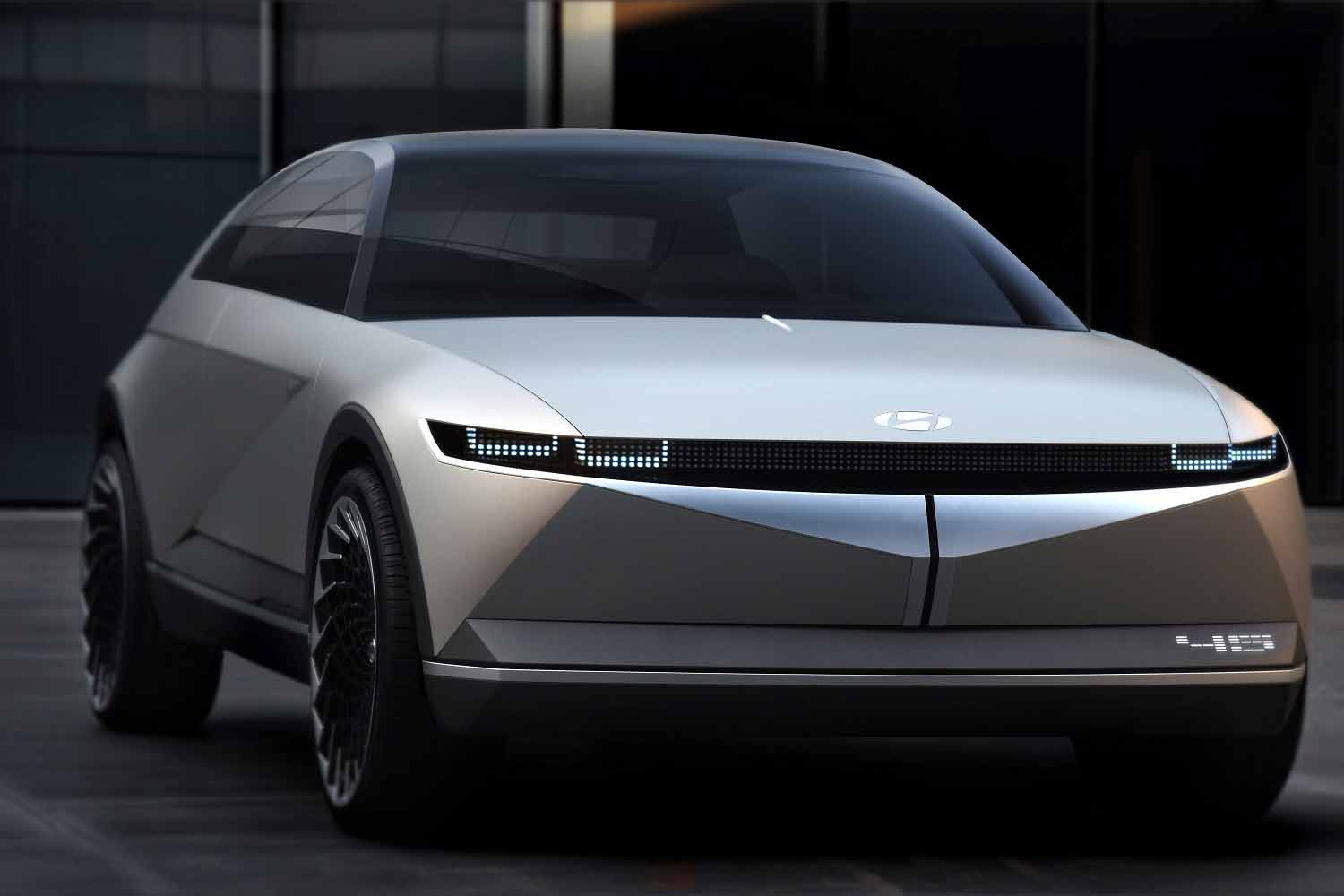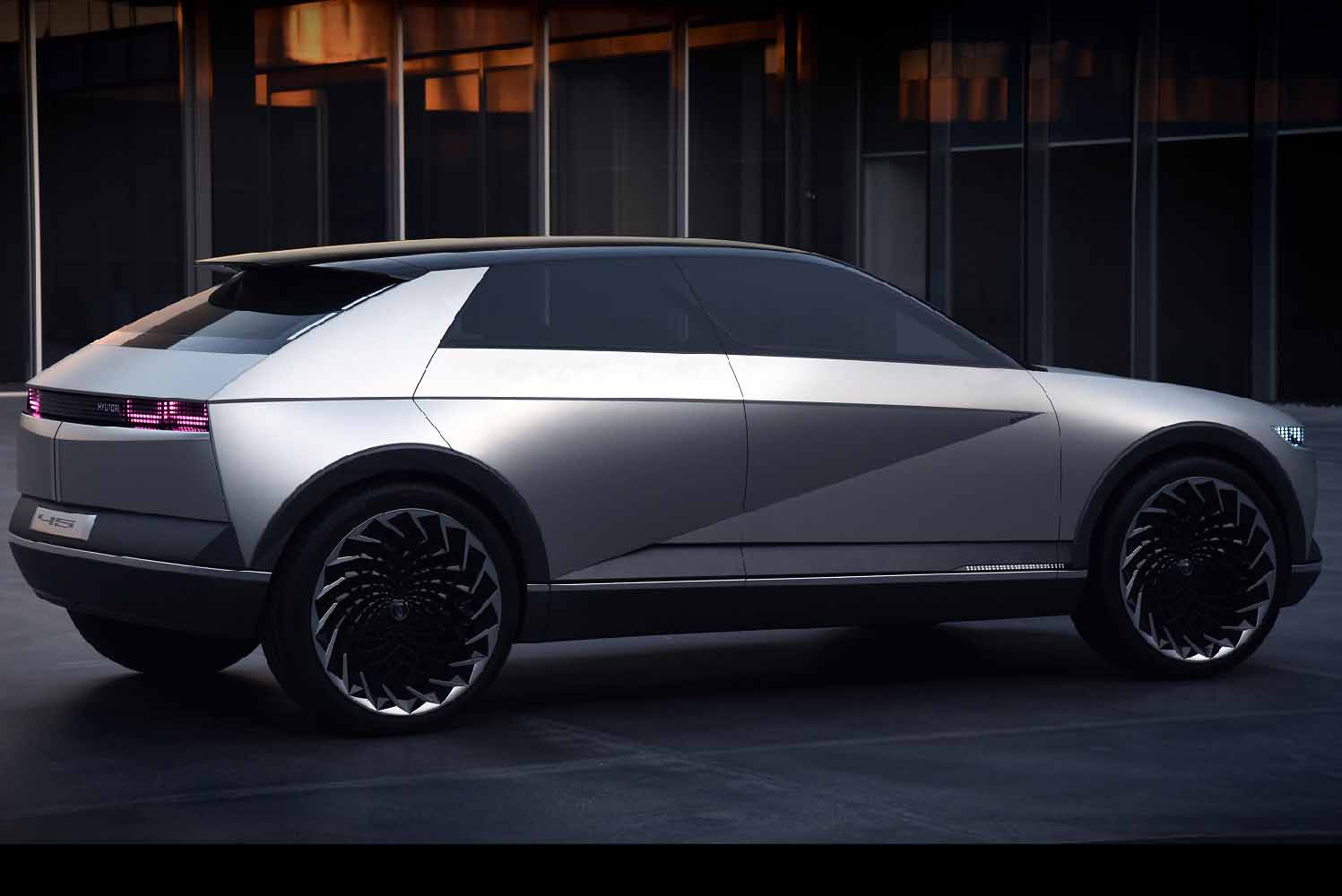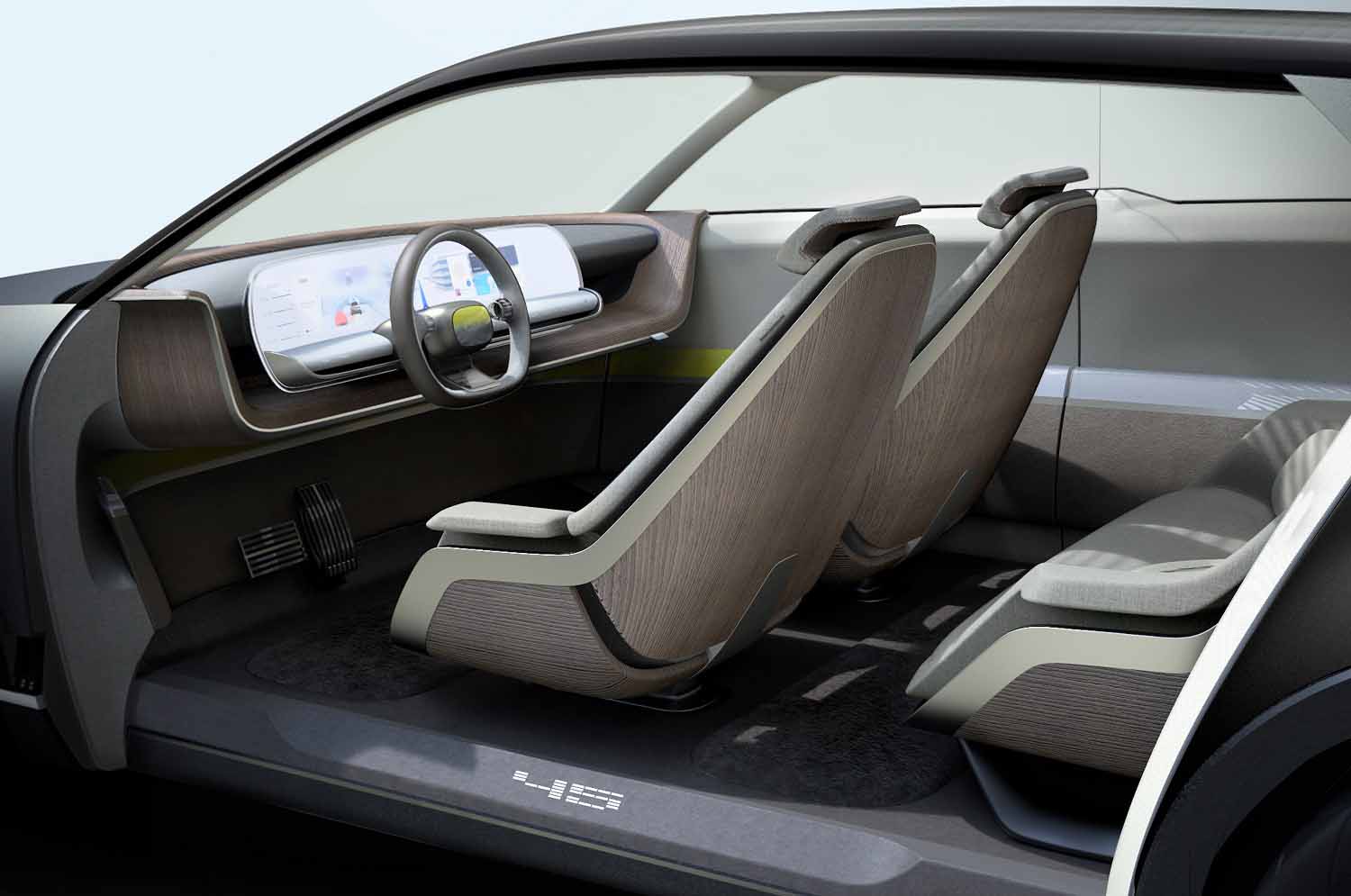Hyundai is based in South Korea, but it designs and develops many of its cars in Germany. Its Europe-based team proudly traveled to the biennial Frankfurt Auto Show to introduce an electric concept car called 45 that sheds light on what future electric models will look like, and the technology they could offer users.
The firm plans to style its upcoming EVs with an eye on its heritage. The 45 surfs the latest wave in electric car design by wearing a wide, screen-like panel that stretches across the entire front end. It doesn’t have traditional headlights; instead, the panel displays a pair of lighting elements made up of dots shaped like quad round headlights. The back end of the car receives the same treatment, and it’s characterized by an unusually wide stance.
Its numerical name wasn’t chosen at random. Hyundai’s early cars were Ford models manufactured under license in South Korea; it notably sold the Cortina locally. The first car it developed in-house was the Pony, an elegant hatchback penned in Italy by Giorgetto Giugiaro, the same man responsible for the original Volkswagen Golf, among dozens of other cars. The Pony made its debut during the 1974 Turin Auto Show, 45 years ago.
The 45 was designed with autonomous driving in mind, and users will be able to take advantage of the technology by relaxing in a lounge-like space. The dashboard shows technology doesn’t have to look busy, or like a NASA command center. It can be used to achieve a pure, simple design, too. The 45’s interior could also be a living room, with a wide, high-resolution screen that displays vehicle functions and entertainment options, and natural materials that provide a contrasting touch.
While we know the concept is electric, Hyundai kept technical specifications under wraps. It could use components already in production, Hyundai makes battery-powered variants of the Kona and the Ioniq, or it could feature next-generation technology. What powers it is less important than what it looks like inside and out, because it’s more of a forward-thinking design study that points the way forward, than an accurate preview of a production car.
Updated on September 10, 2019: Added full information.










